Frontiers Communications
Editor
Editor

Frontiers news
01 Dec 2015
Frontiers in Molecular Biosciences is pleased to announce the launch of its newest section, Ribonucleoprotein Networks. The section, which focuses on the physico-chemical determinants of protein-RNA interactions and functional characterization of ribonucleoprotein networks, is headed by Specialty Chief Editor Prof Gian Gaetano Tartaglia of Catalan Institution for Research and Advanced Studies and Centre for Genomic Regulation, Barcelona, and its Associate Editor board currently comprises the following researchers: Sandro Ataide – University of Sydney, Australia Germano Cecere – Institut Pasteur, France Andrea Cerase – EMBL, Italy Leonid Gitlin – University of California, San Francisco, USA Eleonora Leucci – VIB-KU Leuven, Belgium Francesco Nicassio – Istituto Italiano di Tecnologia, Italy Ulf Andersson Ørom – Max Planck Institute for Molecular Genetics Berlin, Germany Alessandro Quattrone – University of Trento, Italy Nicolas Toro – Estación Experimental del Zaidín, Consejo Superior de Investigaciones Científicas, Spain Michele Trabucchi – Inserm, France Mission Statement From the beginning of transcription through splicing and translation, messenger RNA is associated with a large number of proteins that regulate its processing, stability and transport. In addition to messenger RNA, it has been reported that a major portion of eukaryotic genomes is occupied by DNA sequences whose transcripts do not code for proteins. This part […]

Health
01 Dec 2015
The human immunodeficiency virus (HIV) causes HIV infection, which can lead to acquired immunodeficiency syndrome (AIDS). Since AIDS was clinically first observed in the USA in 1981, HIV infection has become one of the most important global health issues in the world. Held on 1st December annually since 1988, World AIDS Day gives people an opportunity to show support for people living with HIV and acknowledge those who have died. To support the global goal to stop the transmission of HIV, it is also a day to raise awareness about the prevention and control of AIDS. Although HIV infection was first detected in 1981, with the disease it causes being named AIDS in 1983 and the virus itself HIV in 1984, it is important to note that AIDS did not originate in 1981. There are two viruses associated with AIDS: HIV-1 and HIV-2. HIV-2 is less pathogenic than HIV-1 and is mostly restricted to West Africa. HIV-2 is structurally similar to a simian immunodeficiency virus (SIV) strain, SIVsm, which infects the sooty mangabey monkey. It is hypothesized that SIV crossed the species barrier to humans when contaminated animal blood entered cuts on the hands of people who were in […]
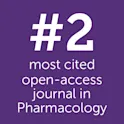
Impact analysis
01 Dec 2015
Frontiers in Pharmacology has an Impact Factor of 4.418 and is the #2 most cited open-access journal in Pharmacology.

Climate action
30 Nov 2015
by Nina Rothe The Frontiers Research Topic on “The Pathway to Solutions: New Frontiers in Climate Change Adaptation & Mitigation” has just launched. The 2015 Paris Climate Conference (#COP21), is poised to lead a shift in focus in climate change research from an emphasis on the scientific test of the role of human activity, already consolidated into strong evidence, to a focus on solutions to prepare society to adapt and mitigate the consequences of a warming planet, where knowledge is urgently needed. Frontiers will support this shift by collecting the latest research on climate adaptation and mitigation across multiple scientific disciplines to be published in a unique Research Topic. Business leaders are putting increasing pressure on governments to act and to achieve a legally binding and universal agreement on climate. As the biggest side event at COP21, France, in partnership with United Nations Environment Programme (UNEP) and the European Commission’s Climate Action network, are hosting the Sustainable Innovation Forum (SIF15), convening cross-sector participants from business, government, finance, UN, NGO and civil society to bolster innovation and further accelerate international sustainable development. To provide policy makers, industry, and business leaders with the latest scientific findings, we are calling for submissions covering all […]
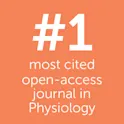
Frontiers news
25 Nov 2015
Frontiers in Physiology an Impact Factor of 4.031 and is the #1 most cited open-access Physiology journal.

Frontiers news
25 Nov 2015
For two years in a row, Frontiers in Psychology is the largest and the #2 most-cited psychology journal in the world.

Frontiers news
24 Nov 2015
Frontiers in Microbiology has an Impact Factor of 4.165 and is the 2nd most-cited open-access journal in Microbiology.

Frontiers news
24 Nov 2015
FRONTIERS DISCUSSION: Goals in Nutrition Science 2015 – 2020 from Frontiers on Vimeo. The field of nutrition has expanded over the past couple of decades with the scope of research now incorporating a number of disciplines ranging from molecular science and molecular genetics to brain energy. Dr. Johannes le Coutre, Field Chief Editor of Frontiers in Nutrition and Head of Perception Physiology at the Nestlé Research Center, says brain energy metabolism and research in how the brain is affected in vulnerable situations has become critical in response to questions about cognitive decline, dementia and Alzheimer’s disease. Professor Pierre Magistretti, Specialty Chief Editor of Frontiers in Neuroenergetics, Nutrition and Brain Health and Dean of the Biological and Environmental Science and Engineering Division at King Abdullah University of Science and Technology (KAUST), agrees. He says bringing together neuroenergetics and nutrition is a natural development of the field. Over the years, le Coutre and Magistretti have been collaborating on ways to merge research in brain energy metabolism into the field of nutrition. They say in the last 15 to 20 years, scientists have identified potential targets for intervention that go beyond advances in drugs. Instead, they are looking at how nutrition can be used […]
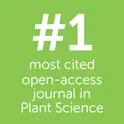
Frontiers news
24 Nov 2015
Frontiers in Plant Science has an Impact Factor of 4.495 and is the largest and the most cited open-access journal in Plant Science.

Neuroscience
20 Nov 2015
Laurence Pope is a Journal Operations Specialist at Frontiers. He studied biochemistry and science communication at Imperial College London before joining Frontiers in 2013. His staff pick this week comes from Frontiers in Human Neuroscience: The role of the primary auditory cortex in the neural mechanism of auditory verbal hallucinations. “We often assume that only people with schizophrenia and other mental disorders experience auditory hallucinations (or ‘hearing voices’). In fact about 5% of mentally healthy people also hear voices, but these people can control how they respond to them, such as ignore them or record what they hear. It’s these people who may ultimately hold the key to better management of schizophrenia. “The authors of this study found that such people have a better ability to regulate their primary auditory cortex, the area of the brain responsible for processing sound, compared to people with schizophrenia. When auditory hallucinations occur mentally healthy people can direct their attention outwards, while people with schizophrenia have difficulty focusing on external sounds and direct their attention inwards. “These discoveries help bring us closer to understanding how auditory hallucinations occur and why such hallucinations affect people differently.”

Impact analysis
20 Nov 2015
Frontiers in Human Neuroscience has an Impact Factor of 3.634 and is the #1 most-cited journal in psychology.

Frontiers news
11 Nov 2015
Women have substantial advantage in STEM faculty hiring, except when competing against more-accomplished men Stephen J. Ceci* and Wendy M. Williams What goes on in the resting state? A qualitative glimpse into resting-state experience in the scanner Russell T. Hurlburt* , Ben Alderson-Day, Charles Fernyhough* and Simone Kühn Are common names becoming less common? The rise in uniqueness and individualism in Japan Yuji Ogihara*, Hiroyo Fujita, Hitoshi Tominaga, Sho Ishigaki, Takuya Kashimoto, Ayano Takahashi, Kyoko Toyohara and Yukiko Uchida Does Cognitive Behavior Therapy for psychosis (CBTp) show a sustainable effect on delusions? A meta-analysis Stephanie Mehl*, Dirk Werner and Tania M. Lincoln Chemosensory anxiety cues moderate the experience of social exclusion – an fMRI investigation with Cyberball Olga A. Wudarczyk*, Nils Kohn, Rene Bergs, Raquel E. Gur, Bruce Turetsky, Frank Schneider and Ute Habel Comprehension and engagement in survey interviews with virtual agents Frederick G. Conrad*, Michael F. Schober, Matthew Jans, Rachel A. Orlowski, Daniel Nielsen and Rachel Levenstein Interaction effect of response medium and working memory capacity on creative idea generation Ning Hao*, Huan Yuan, Rui Cheng, Qing Wang and Mark A. Runco Emotion has no impact on attention in a change detection flicker task Robert C. A. Bendall* and Catherine Thompson Differential effects of socioeconomic status on working and procedural […]
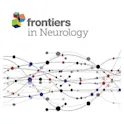
Frontiers news
10 Nov 2015
Training efficiency and transfer success in an extended real-time functional MRI neurofeedback training of the somato-motor cortex of healthy subjects Tibor Auer*, Renate Schweizer and Jens Frahm Circadian phenotype composition is a major predictor of diurnal physical performance in teams Elise Facer-Childs and Roland Brandstaetter* The central biobank and virtual biobank of BIOMARKAPD: a resource for studies on neurodegenerative diseases Babette L. R. Reijs*, Charlotte E. Teunissen, Nikolai Goncharenko, Fay Betsou, Kaj Blennow, Inês Baldeiras, Frederic Brosseron, Enrica Cavedo, Tormod Fladby, Lutz Froelich, Tomasz Gabryelewicz, Hakan Gurvit, Elisabeth Kapaki, Peter Koson, Luka Kulic, Sylvain Lehmann, Piotr Lewczuk, Alberto Lleó, Walter Maetzler, Alexandre de Mendonça, Anne-Marie Miller, José L. Molinuevo, Brit Mollenhauer, Lucilla Parnetti, Uros Rot, Anja Schneider, Anja Hviid Simonsen, Fabrizio Tagliavini, Magda Tsolaki, Marcel M. Verbeek, Frans R. J. Verhey, Marzena Zboch, Bengt Winblad, Philip Scheltens, Henrik Zetterberg and Pieter Jelle Visser* Training in compensatory strategies enhances rapport in interactions involving people with Möbius syndrome John Michael*, Kathleen Bogart, Kristian Tylén, Joel Krueger, Morten Bech, John Rosendahl Østergaard and Riccardo Fusaroli Neural mechanisms underlying transcranial direct current stimulation in aphasia: a feasibility study Lena Ulm, Katie McMahon, David Copland, Greig I. de Zubicaray and Marcus Meinzer* Association of statins with sensory and autonomic ganglionopathy. […]
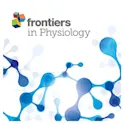
Frontiers news
09 Nov 2015
Computational implementation of a tunable multicellular memory circuit for engineered eukaryotic consortia Josep Sardanyés, Adriano Bonforti, Nuria Conde, Ricard Sole* and Javier Macia* Diagnostic ultrasound estimates of muscle mass and muscle quality discriminate between women with and without sarcopenia Catheeja Ismail, Johannah Zabal, Haniel J. Hernandez, Paula Woletz, Heather Manning, Carla Teixeira, Loretta DiPietro, Marc R. Blackman and Michael O. Harris-Love* Effect of oral nitrate supplementation on pulmonary hemodynamics during exercise and time trial performance in normoxia and hypoxia: a randomized controlled trial Nicolas Bourdillon, Jui-Lin Fan, Barbara Uva, Hajo Muller, Philippe Meyer and Bengt Kayser* Multitasking roles of mosquito labrum in oviposition and blood feeding Young-Moo Choo, Garrison K. Buss, Kaiming Tan and Walter S. Leal* RNA-Seq analysis of glycosylation related gene expression in STZ-induced diabetic rat kidney inner medulla Xiaoqian Qian, Xuechen Li, Titilayo O. Ilori, Janet D. Klein, Rebecca P. Hughey, Cong-jun Li, Abdel A. Alli, Zhengyu Guo, Peng Yu, Xiang Song* and Guangping Chen* Influence of aerobic exercise training on post-exercise responses of aortic pulse pressure and augmentation pressure in postmenopausal women Nobuhiko Akazawa, Song-Gyu Ra, Jun Sugawara and Seiji Maeda* Flight control and landing precision in the nocturnal bee Megalopta is robust to large changes in light intensity Emily Baird*, Diana C. Fernandez, […]

Frontiers news
08 Nov 2015
An algorithm to predict the connectome of neural microcircuits Michael W. Reimann, James G. King, Eilif B. Muller, Srikanth Ramaswamy and Henry Markram* Marmosets treated with oxytocin are more socially attractive to their long-term mate Jon Cavanaugh*, Michelle C. Huffman, April M. Harnisch and Jeffrey A. French Being asked to tell an unpleasant truth about another person activates anterior insula and medial prefrontal cortex Melissa M. Littlefield*, Martin J. Dietz, Des Fitzgerald, Kasper J. Knudsen and James Tonks Dynamics of place, boundary and object encoding in rat anterior claustrum Maciej M. Jankowski and Shane M. O‘Mara* Sleep deprivation alters choice strategy without altering uncertainty or loss aversion preferences O’Dhaniel A. Mullette-Gillman*, Yoanna A. Kurnianingsih and Jean C. J. Liu Cognitive and neural plasticity in older adults’ prospective memory following training with the Virtual Week computer game Nathan S. Rose*, Peter G. Rendell, Alexandra Hering, Matthias Kliegel, Gavin M. Bidelman and Fergus I. M. Craik Dynamic expression of long noncoding RNAs and repeat elements in synaptic plasticity Jesper L. V. Maag, Debabrata Panja, Ida Sporild, Sudarshan Patil, Dominik C. Kaczorowski, Clive R. Bramham, Marcel E. Dinger* and Karin Wibrand* Synaptic plasticity in a recurrent neural network for versatile and adaptive behaviors of a walking robot Eduard Grinke*, Christian Tetzlaff, […]
Get the latest research updates, subscribe to our newsletter